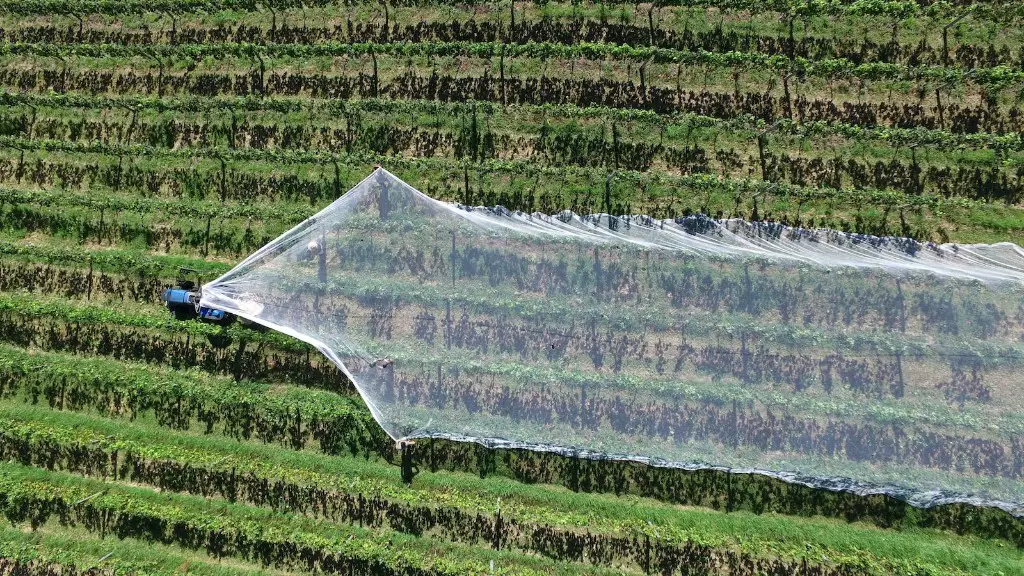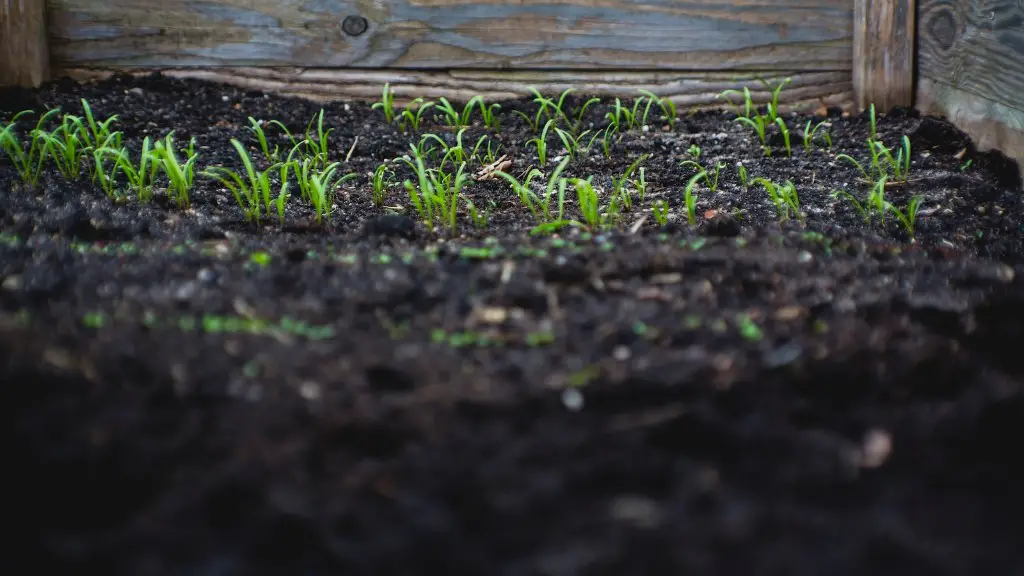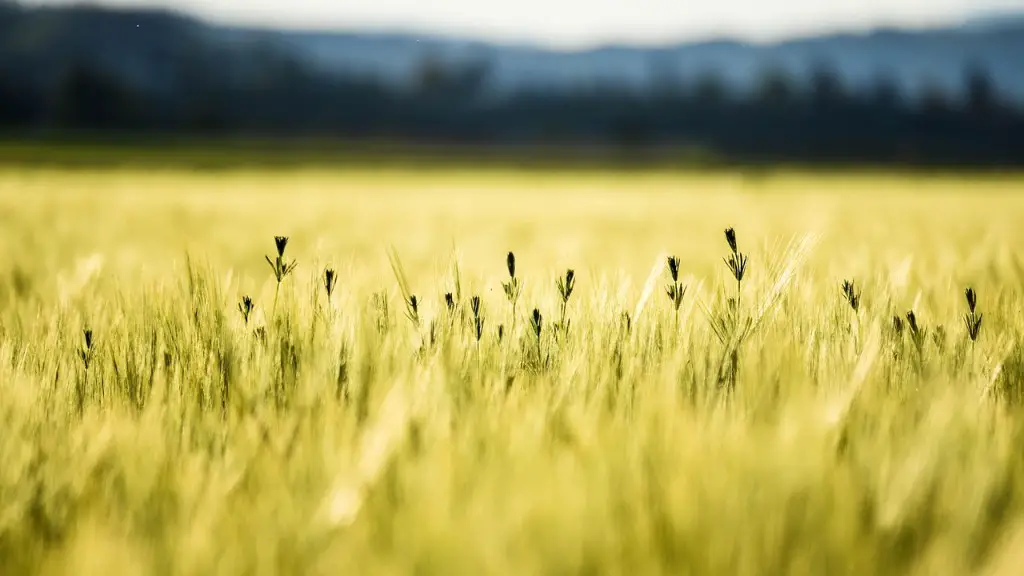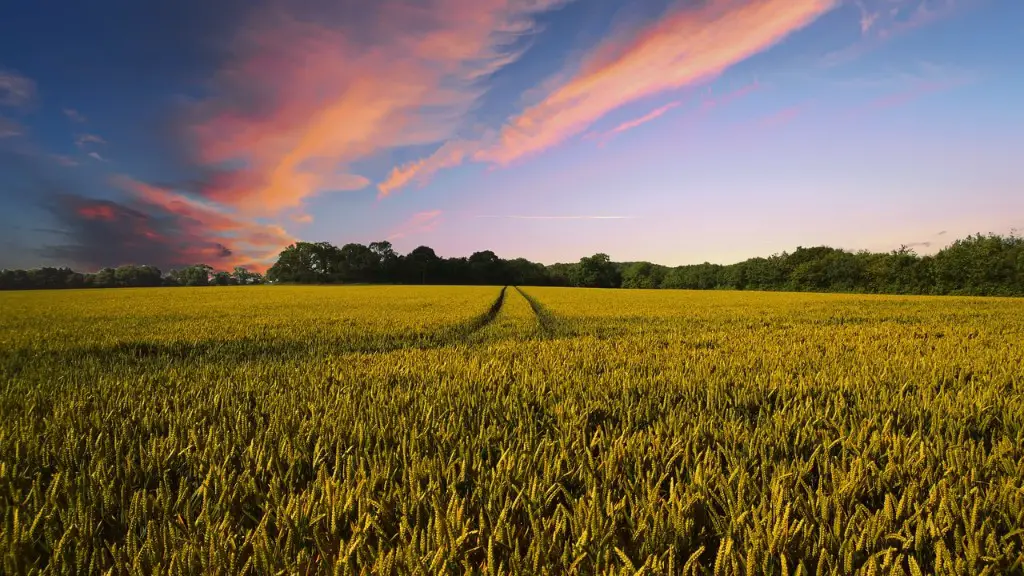The effects of agriculture on the environment are often overlooked but can be extremely destructive. One of the most significant ways that agriculture can impact the environment is through desertification. Desertification is the process by which an area of land becomes progressively drier and more desert-like. This process can be caused by a number of factors, but agricultural practices are one of the most common and damaging.
When agricultural land is mismanaged, it can quickly become degraded. Deforestation, overgrazing, and poor irrigation practices are all common causes of desertification. When these activities lead to soil erosion, it can be difficult for vegetation to recover. This can cause a Feedback loop, where the loss of vegetation leads to more soil erosion, which then leads to even more vegetation loss. As this cycle continues, it can turn an area of lush, green land into a barren wasteland.
In many cases, desertification is caused by a combination of natural factors and human activity. Drought can play a role, as can climate change. But, ultimately, it is often the way that humans use and abuse the land that is the most significant factor. By better understanding the causes of desertification, we can take steps to prevent it from occurring.
Desertification is the process by which an area of land becomes progressively drier and turns into a desert. Agriculture is one of the main causes of desertification, as it can lead to the overuse and degradation of the land. Poor agricultural practices, such as improper irrigation, can lead to the depletion of water resources, while the use of pesticides and herbicides can lead to soil contamination. In addition, the clearing of land for agriculture can result in the loss of vegetation, which can further contribute to desertification.
What is the meaning of desertification in agriculture?
Desertification is a huge problem that is only getting worse. It is defined as land degradation in arid, semiarid and subhumid areas, accruing from multiple factors, including variations in climate and human activities. This means that as the climate changes and we continue to damage the land, desertification will only get worse. It is a huge problem that needs to be addressed urgently.
Climatic variations and human activities are the two main causes of desertification. Desertification is the removal of the natural vegetation cover, which leads to the loss of soil and water. This can be caused by many factors, including overgrazing, agricultural activities in vulnerable ecosystems, and the use of too much fuel wood.
What are 4 causes of desertification
Desertification is the process by which an area of land becomes progressively drier, and ultimately becomes a desert. Desertification is caused by a combination of factors, including climate change, population growth, removal of fuel wood, overgrazing, over-cultivation and soil erosion.
Climate change is one of the main drivers of desertification. As the earth’s climate changes, rainfall patterns are also changing. In some areas, this has led to an increase in the incidence of drought, which can lead to desertification.
Population growth is another factor that can contribute to desertification. As the population of an area increases, so does the demand for resources such as water, food and fuel. This can lead to over-exploitation of the land, and ultimately to desertification.
The removal of fuel wood can also contribute to desertification. Fuel wood is often used for cooking and heating in areas where there is no other source of energy. When fuel wood is removed from an area faster than it can grow back, it can lead to desertification.
Overgrazing and over-cultivation are also major causes of desertification. When land is over-grazed, the vegetation is not able to
Desertification is a process whereby farmland turns into desert. This can happen due to various reasons such as over-farming or drought. It is more likely to occur in areas that are already dry and arid.
What is the impact of drought and desertification on agriculture?
Desertification is a major problem in many parts of the world. It has dire consequences at both the local and national level. By impoverishing the natural potential of ecosystems, desertification also reduces agricultural yields and make them less predictable. It therefore has a bearing on the food security of people living in affected areas. In addition, desertification can lead to increased conflict over resources, as well as increased migration as people search for areas that are more hospitable. All of these factors have serious implications for both the people affected and the countries in which they live.
Human activities, especially those that involve deforestation and the overexploitation of aquifers, are major contributing factors to desertification. The effects of climate change, which is also driven by humans, exacerbate the problem even further. Extreme weather events such as droughts, hurricanes, and fires cause even more destruction and contribute to the spread of desertification.
What are the 3 main causes of desertification?
Desertification is the conversion of a naturally dry area of land to desert, typically as a result of drought or anthropogenic climate change.
Human activities that contribute to desertification include the expansion and intensive use of agricultural lands, poor irrigation practices, deforestation, and overgrazing. These activities lead to the loss of vegetation and topsoil, which reduces the land’s ability to hold water and results in more frequent and severe droughts.
Deforestation is one of the most significant drivers of desertification. Trees and other vegetation are necessary for the land to retain moisture, and their loss exposes the soil to erosion from wind and rain. Overgrazing also accelerates the process of desertification by damaging vegetation and exposing the soil to erosion.
The expansion of agricultural lands is another major cause of desertification. In many cases, farmers clear natural vegetation to make way for crops or grazing land. This removal of vegetation can cause serious problems, as it reduces the land’s ability to hold water and leads to increased erosion.
Intensive agricultural practices, such as the use of chemicals and heavy machinery, can also contribute to desertification. These practices can damage the environment and lead to the loss of vegetation, which further reduces the land
Land degradation and desertification can have a significant impact on human health. When land is degraded and deserts expand, food production is reduced and water sources dry up, which can force populations to move to more hospitable areas. This can lead to increased rates of malnutrition, disease and death. In addition, land degradation and desertification can cause dust and sandstorms, which can damage the respiratory system and cause other health problems.
What causes desertification and how can it be stopped
Desertification is a major problem in many parts of the world, especially in dry, arid regions. One of the primary causes of desertification is loss of vegetation, as plants play a major role in retaining water and enriching the soil. This makes reforestation programs among the most effective solutions to desertification. However, there is a lot of work to be done in educating local populations on the dangers of deforestation and how to prevent it.
Desertification is a type of land degradation in which a Dryland ecosystem becomes increasingly arid, typically losing its vegetation and wildlife. Desertification occurs when rain-fed agriculture or pastoralism cannot sustain the local population, and people are forced to move to more habitable areas. This process can be caused by a combination of natural and human factors, such as climate change, overgrazing, and poor irrigation practices.
What are the 6 effects of desertification?
Desertification is a major environmental issue that is often overlooked. It is the process by which an area becomes a desert, and it is happening all over the world, including in developed countries. The causes of desertification are varied, but include human activities such as overgrazing, deforestation, and poor irrigation practices. The effects of desertification are far-reaching and can include higher food prices, water shortages, increased poverty, and violent conflict. If we do not take action to stop desertification, it will continue to consume more of our planet, with devastating consequences.
The loss of natural vegetation can have a number of negative impacts on the soil. The topsoil can dry out, leading to a decrease in the diversity and quantity of microorganisms that help to keep the soil fertile. Nutrients may also wash out, and the soil can be blown away by the wind or washed away by rains.
Does farmland cause deforestation
chopping down trees to create farmland is one of the biggest drivers of deforestation globally. Farmland expansion is responsible for 90% of deforestation around the world, which includes crops grown for human and animal consumption, as well as the clearing of forests for animal grazing.
The agricultural impacts of land degradation can be significant. Loss of soil nutrients, soil erosion, and reduction in crop yields are all potential impacts of degraded land. In addition, degraded land can contribute to persistent poverty and decreased ecosystem resilience.
How does agriculture cause drought?
There are a number of reasons why agricultural droughts can occur, and these can vary depending on the region or area in question. Low precipitation is one of the most common causes, as this can prevent crops from growing properly or at all. The timing of water availability can also be a factor, as crops may need to be watered at specific times in order to grow properly. Additionally, decreased access to water supplies can also lead to agricultural droughts, as farmers may not be able to get the water they need to irrigate their crops. Finally, increased water demands from the agricultural sector can also contribute to drought conditions, as more water is being used than what is being replenished.
The depletion of water availability in soils can have significant negative impacts on crop and livestock productivity. In addition, surface and groundwater supplies may decline during drought, which can lead to increased costs for farmers and ranchers who need to access water for irrigation and livestock watering. These impacts can have ripple effects throughout the economy, so it is important to address the issue of water availability in order to maintain food security.
How does agricultural drought occur
Agricultural drought is a very real and concerning phenomenon that can have a major impact on both crops and livestock. While a lack of rainfall is the primary factor that leads to agricultural drought, other factors such as high temperatures and strong winds can also contribute. Agricultural drought can lead to a decline in crop yields and pastures, as well as increased wildfires and dust storms. It is therefore extremely important for farmers and other agriculturalists to be aware of the conditions that can lead to agricultural drought, and to have plans in place to mitigate its effects.
Desertification is a type of land degradation in which a dryland ecosystem becomes increasingly arid, either through natural processes or human activities.
Overgrazing, deforestation, farming practices, urbanization, and other types of land development can all contribute to desertification. Climate change can also strip the land of resources, making it more susceptible to desertification. Natural disasters such as droughts and floods can also cause desertification.
Conclusion
The main ways that agriculture can cause desertification are through improper irrigation methods, overgrazing, and poorly managed agricultural land. Improper irrigation can lead to drought and the destruction of plant life, which in turn can lead to wind and water erosion. Overgrazing can damage the land by preventing new growth and causing soil compaction. Poorly managed agricultural land can cause problems such as soil erosion and nutrient depletion.
Desertification is caused by a variety of factors, but agriculture is one of the main drivers. When agricultural activities are widespread in an area, it can lead to the loss of vegetation, which in turn contributes to desertification. In addition, irrigation for agriculture can lead to the depletion of water resources, which can also exacerbate desertification.





